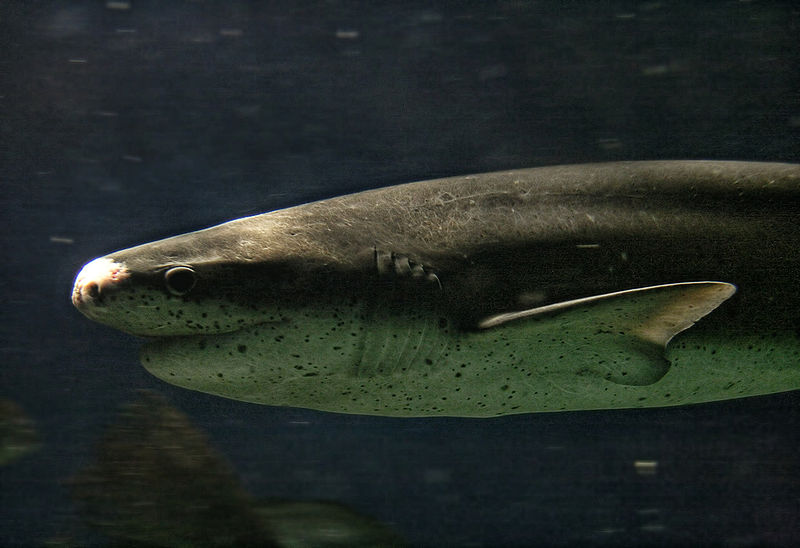
Our fascination with sharks inspires both awe and dread, and we can’t seem to get enough of them. With the annual “Shark Week” nearly upon us, courtesy of the Discovery Channel, it’s time to take the hype and turn it to a better understanding of our own local ecosystem — which will hopefully help to keep this fragile web of life intact. Scientists warn that worldwide, sharks are being over-harvested with estimates of more than 100 million sharks taken annually for their skins, liver and fins. We don’t have the data about some shark species populations to begin to understand how much “take” can be supported.

With the most well-known predator just offshore and common around the Farallon Islands, Great White sharks overshadow more common sharks in our area. Our bay supports eleven shark species including Broadnose Sevengill sharks, the apex predator in the bay. I had the opportunity to chat with Keith Herbert, Assistant Curator of Animal Care at the Aquarium of the Bay, about a joint study they did with UC Davis on the Bay’s Sevengill Sharks.
Keith Herbert: The goal of the study was to more effectively describe the behavior and ecology of Sevengill sharks in the San Francisco Bay. Twenty-one sharks were tagged in 2008 with coded beacons; six were tagged with continuous transmitters and tracked in the bay. Approximately 100 monitors were placed throughout San Francisco and San Pablo Bays. Some initial findings of the study were:
- Sevengill sharks resident to San Francisco Bay: The study indicates that Sevengill sharks demonstrate a high degree of residency in San Francisco Bay.
- Daily and seasonal movement patterns in the bay: Detections at the Golden Gate occurred day and night (indicating site fidelity), with more than 50% of tagged sharks detected in the bay throughout most of the year.
- Sevengill “hotspots” within the bay: Golden Gate Bridge and Alcatraz areas are significantly preferred areas.
SNE: What did the study reveal that most surprised you about Sevengill sharks?
KH: While not surprising, it was good to have solid confirmation that the bay is an important habitat for this species. It was remarkable to see the visible patterns charted out of how frequently the same individual animals visited the same areas in a specific range.
